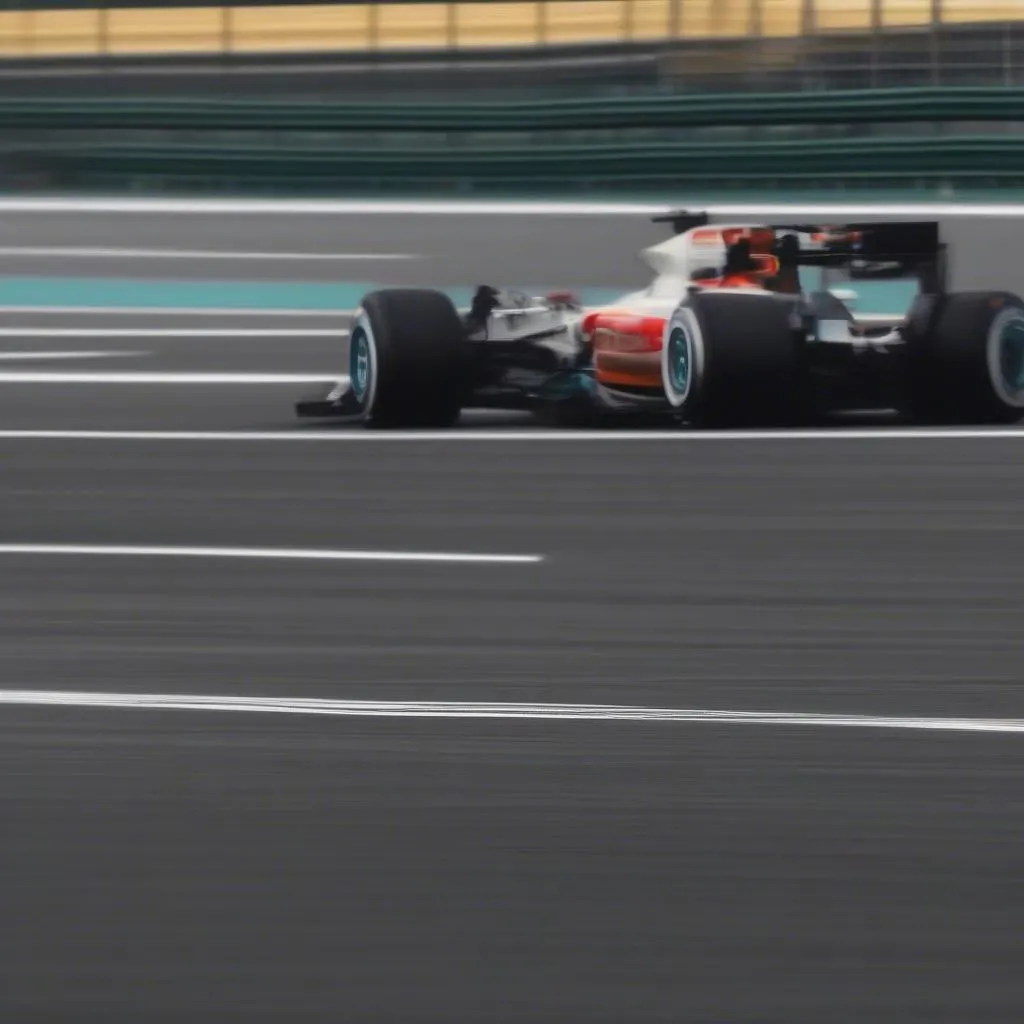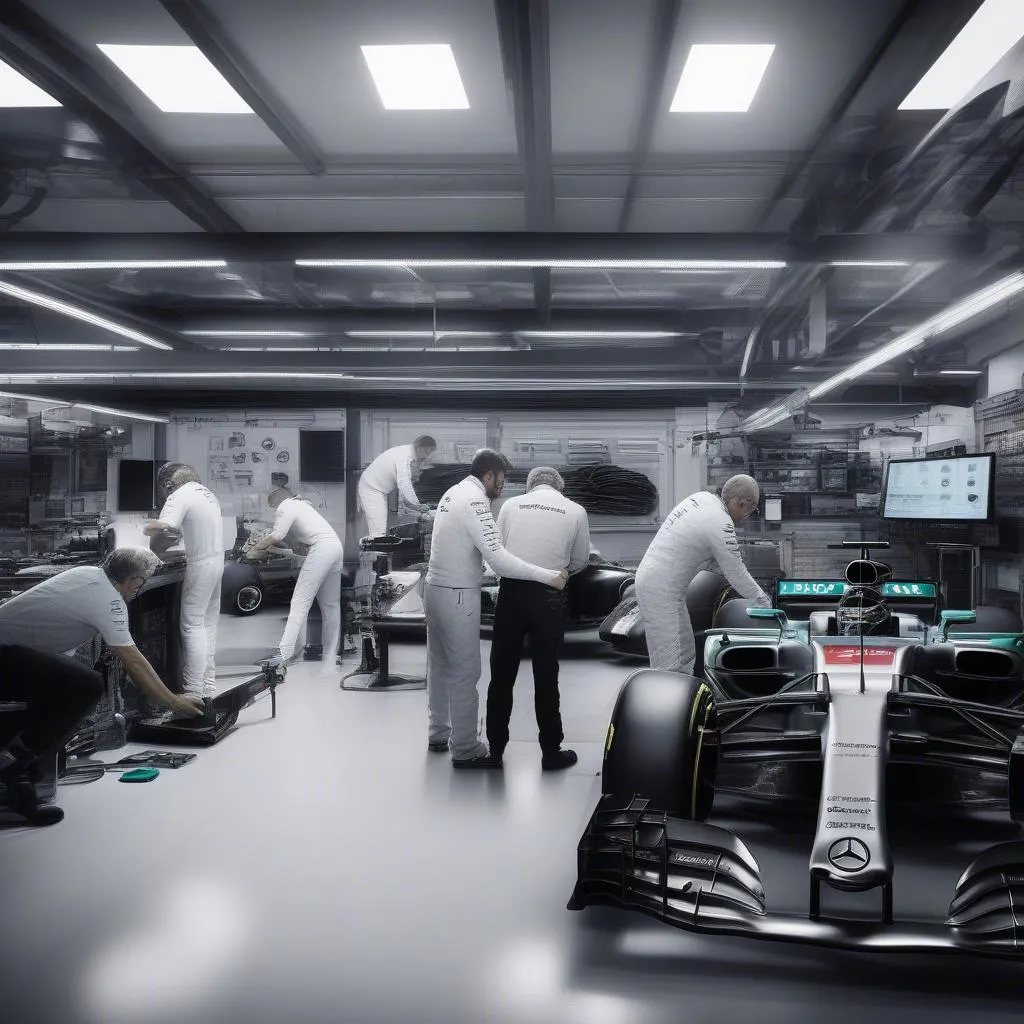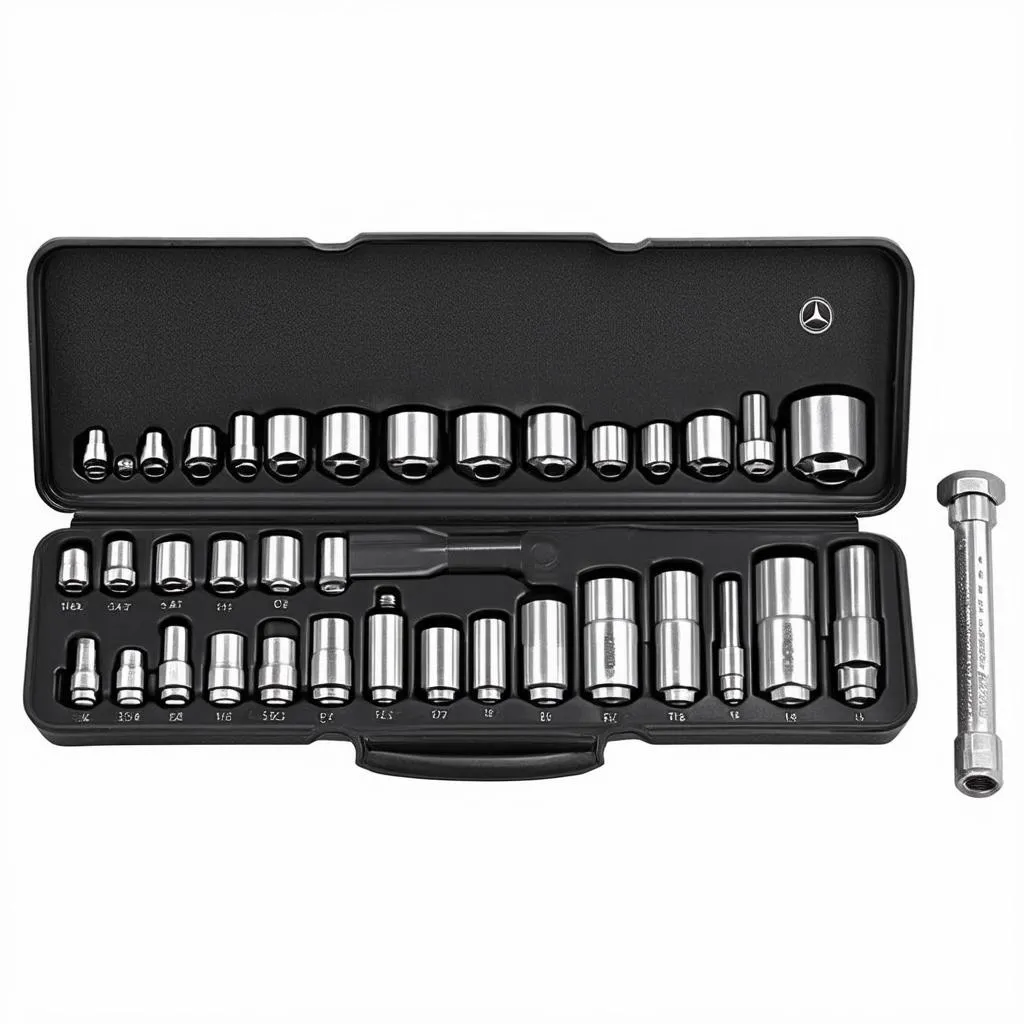The Silver Arrows haven’t quite hit the mark in recent F1 seasons. After dominating the sport for years, Mercedes’ performance has left fans wondering, “When will Mercedes fix the F1 car?”. While no one outside the team has a definitive answer, we can analyze their challenges and potential solutions.
Understanding the Issues
Mercedes’ recent struggles stem from a few key factors:
- Regulation Changes: The introduction of new aerodynamic regulations in 2022 significantly impacted car performance. Teams like Red Bull adapted quickly, while Mercedes grappled with issues like “porpoising.”
- Design Philosophy: Mercedes opted for a unique “zero sidepod” design on their W13 and W14 cars. This radical approach, while innovative, seemingly hasn’t delivered the desired results, potentially creating unforeseen aerodynamic challenges.
- Tire Management: F1’s switch to 18-inch tires in 2022 changed how cars handle and perform. Mercedes initially found it difficult to get the most out of these tires, particularly in qualifying.
 F1 tires
F1 tires
Signs of Progress and Potential Solutions
Despite the difficulties, Mercedes is known for its relentless development and engineering prowess. There have been signs of improvement:
- Reduced Porpoising: The team has significantly mitigated the aggressive bouncing phenomenon that plagued their early 2022 car.
- Upgrades: Mercedes continues to bring aerodynamic upgrades to each race, aiming to improve the car’s balance and performance. They recently introduced a significant upgrade package at the Monaco Grand Prix, moving away from their zero sidepod design.
- Driver Feedback: Both Lewis Hamilton and George Russell provide valuable feedback to help engineers fine-tune the car’s setup and address its weaknesses.
 Mercedes F1 Engineers
Mercedes F1 Engineers
The Road Ahead: It’s a Development Race
“Fixing” an F1 car isn’t a quick fix. It’s an ongoing process of:
- Data Analysis: Mercedes engineers constantly analyze data from track testing and race weekends to identify areas for improvement.
- Simulation: Computational Fluid Dynamics (CFD) and other simulation tools help model different design solutions before they are produced and tested on the track.
- Collaboration: Drivers, engineers, and mechanics work together closely to provide feedback and implement changes.
As Dr. Amelia Schmidt, a motorsport engineering consultant, notes, “In F1, the development race never ends. Teams like Mercedes are always pushing the boundaries, seeking those marginal gains that can make all the difference.”
CARDIAGTECH offers a range of diagnostic tools and resources for automotive enthusiasts and professionals. Learn more about our products here.
FAQs
Will Mercedes return to winning ways this season?
It’s too early to say definitively. While catching up to Red Bull’s current dominance is a tall order, Mercedes has shown they can close performance gaps with consistent development.
Is the zero sidepod concept flawed?
The zero sidepod design’s ultimate success depends on how effectively Mercedes can extract performance and manage its challenges. Other teams haven’t followed suit, suggesting potential limitations.
Can Mercedes win the 2023 F1 World Championship?
It’s a long shot, but not impossible. The team’s focus will likely shift to developing their 2024 car, incorporating lessons learned from this year.
What other diagnostic tools do I need for my car?
Check out our range of products on Cardiagtech for comprehensive diagnostic solutions.
Conclusion
While the exact timeline remains uncertain, Mercedes is undeniably working diligently to improve their F1 car’s performance. The team’s history of success, combined with its evident determination, suggests that it’s only a matter of time before the Silver Arrows are once again fighting for victories.


